Episode: varieties, rules of care and reproduction

Episcia is an amazing herbaceous perennial that can become a worthy and most remarkable decoration of any home. The original color of the leaves of this plant and the small but very beautiful flowers give the episode an impressive decorative effect. However, the exotic origin of this representative of the Gesneriev family dictates specific rules of care, which must be followed by every florist who decides to grow such a beautifully flowering perennial at home. How to care for an episode and what should be considered when growing it? Let's try to figure it out.
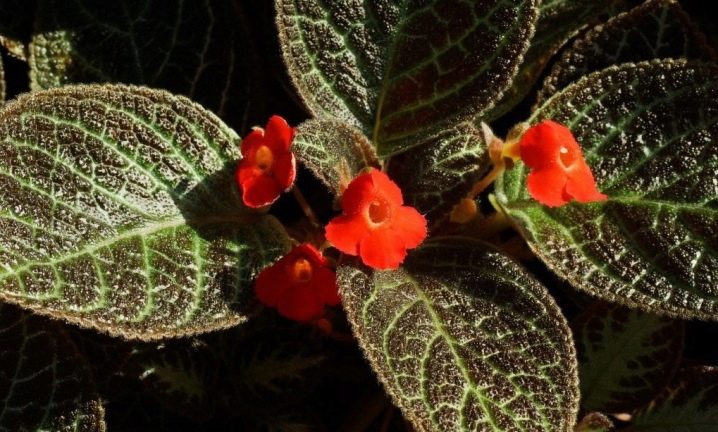
Description
Despite the fact that the natural habitat of this exotic is the tropical forests of South and Central America, the episode easily takes root in indoor conditions. Among its characteristic advantages, florists note rapid growth and development, as well as a long and very attractive flowering.

The plant has a fibrous root system, has graceful creeping shoots and elongated stolons, on which compact rosettes are formed. The special charm of the episode is given by its unusual velvety leaves of the correct rounded shape. An indelible impression is made by the color of the foliage, which can have a pale green, chocolate brown, silver, pink and even raspberry-purple hue. Many types of episodes have leaves not only with an original color, but also with an intricate pattern. This feature makes the plant amazingly beautiful even in the absence of flowers.
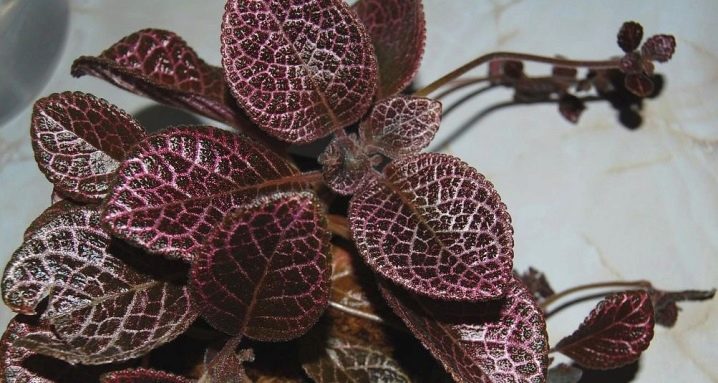
In their natural habitat, the intensive growth of shoots and the active formation of new rosettes allow the episodes to quickly develop territories, covering the ground with a solid carpet. In indoor plant growing, this exotic is most often grown in the form of an ampelous form. In young plants, at first, the stems rush upward, but over time they begin to creep, forming numerous lateral shoots. The average length of the shoots varies between 60-70 centimeters.
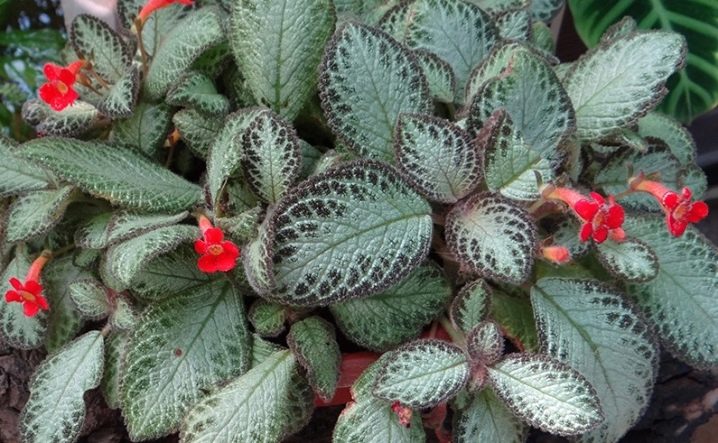
During the flowering period, this flowering perennial forms small and, as a rule, single funnel-shaped flowers. Despite its modest size (up to 3 centimeters in length and 1.5 centimeters in diameter), the flowers of the episode look very impressive, contrasting with the unusual color of the foliage. The color of the flowers depends on the species and hybrid characteristics of the plants. It can be milky white, golden yellow, pale blue, carmine red, lilac pink, purple, pale lavender. There are also hybrids with two-color flowers.
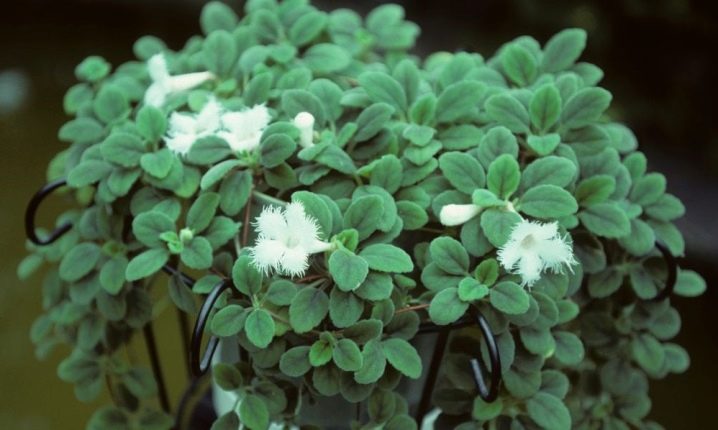
The episode blooms for a long time. Under favorable conditions of detention, its duration can be several months. The opening of the buds occurs gradually, making the flowering seem continuous.
Belonging to the Gesneriaceae family, this plant is a close relative of such flowering perennials as:
- saintpaulia;
- streptocarpus;
- color scheme;
- eschinantus;
- gloxinia.
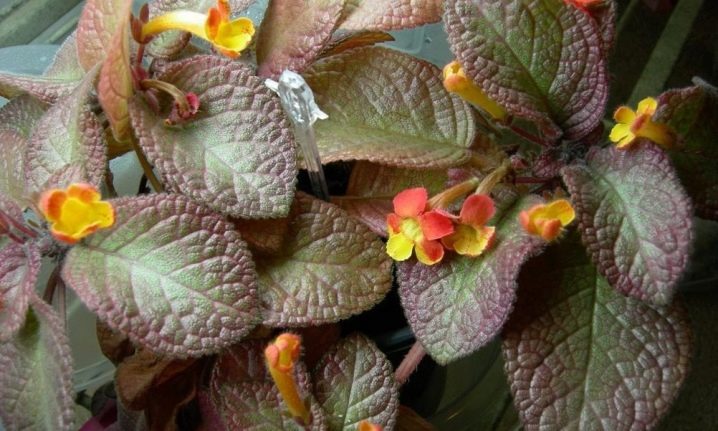
The close relationship of these plants largely explains the similarity of their requirements for conditions of maintenance and care. All of them prefer warmth, diffused and soft lighting, slightly increased air humidity and the absence of drafts.
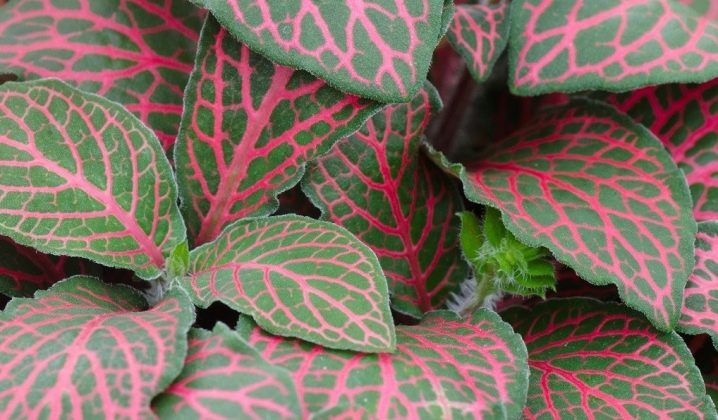
Types and popular varieties
To date, breeders from different countries have developed many hybrid forms of episodes, each of which is unique in its own way. At the same time, species of the genus Episcia, which are typical inhabitants of the tropics of Mexico, Brazil, and the Antilles, do not lose their popularity in indoor plant growing.
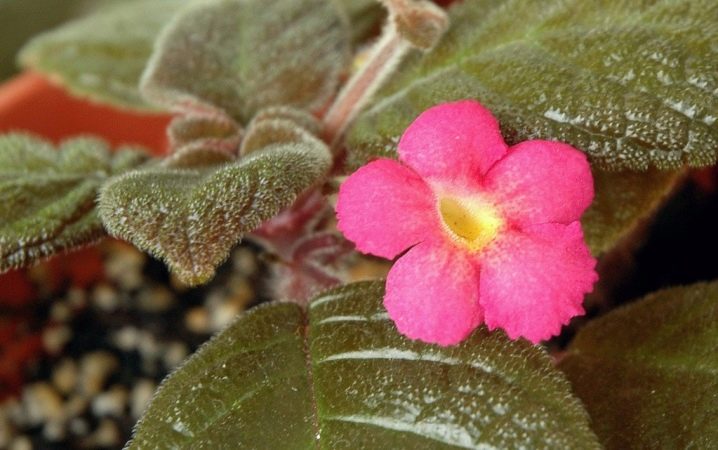
Episcia copper (copper-red) or Episcia cupreata - one of the most famous "pure" species, which has won the sincere love of fans of exotic flora. This plant is still used in breeding work, where it acts as a source material for creating new interesting varieties.
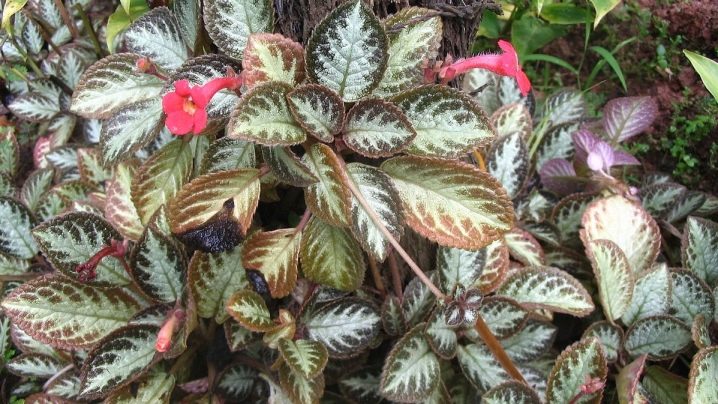
A characteristic feature of this exotic is its dark foliage with a copper-red tint and a pale green pattern. During the flowering period, forms a few single flowers of bright red color with a golden yellow core.
Creeping episode Is a herbaceous perennial native to the countries of Central and South America. The plant is remarkable for its long and creeping shoots, covered with pubescent olive green foliage with dark red or dark brown edging. From mid-summer to early autumn, exot forms single, small, scarlet flowers. In its natural habitat, this plant is able to braid tree trunks, easily clinging to them with long stems.

Episode lilac Is another original representative of the tropical flora, which has gained wide popularity among flower growers around the world. This species is characterized by carved, pubescent foliage of a dark emerald hue with pale green stripes adorning the center. This exotic acquires a special decorative effect during the flowering period, when it is covered with a few lilac-purple flowers.

Episcia punctata - a rather rare species, found mainly in its natural habitat. The exotic beauty of this plant is emphasized not only by the dense rich green foliage, but also by the unusual funnel-shaped flowers of white color with thick lilac specks.

Tiger Stripe Episode Is a popular representative of home green collections, appreciated for its amazing decorativeness. The plant has pubescent ovoid leaves of dark emerald color with numerous pale green or gray-olive veins. During flowering, it is covered with single small flowers of scarlet color with a yellow core. With proper formation, it forms a compact and lush bush, but it can take both cascading and ampelous forms.
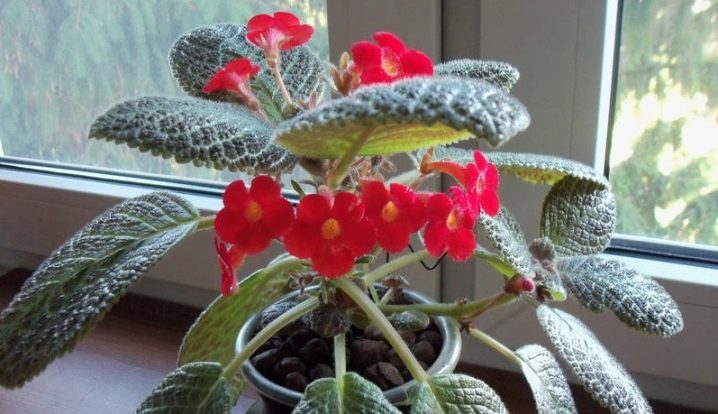
Episode watercolor - a whole group of representatives of the Gesnerievye family, which are very popular with flower growers. A characteristic feature of these plants is the unusual color of the leaves, which is dominated by blurred coral pink, peach, cream and delicate emerald tones. The original coloring of the foliage resembles the arbitrary brush strokes of the artist, which is why these episodes got their name.

"Rose Garden" - a very spectacular episode, notable for the intricate coloration of the foliage. The leaves have a regular elliptical shape with a slightly pointed tip. The obverse of the leaves is emerald green in color with a silvery-olive stripe in the center and a crimson-red dusting along the edges. A striking feature of the leaves is a pearlescent-glossy glow. The flowers are solitary, scarlet or juicy orange with a golden yellow core.
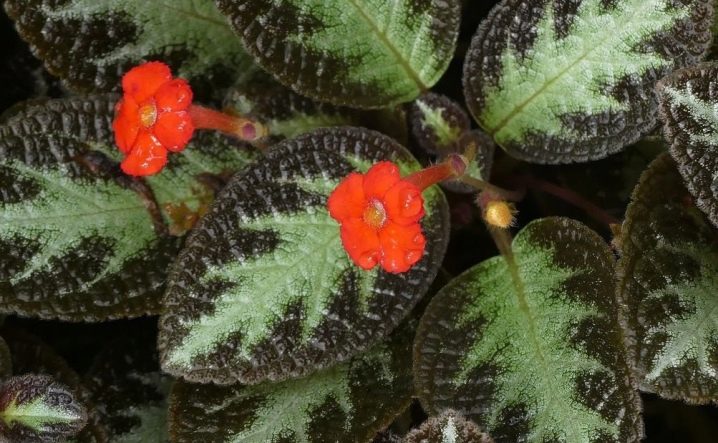
Episode Temiscaming - an elegant indoor perennial, loved by flower growers for its dense olive-green foliage with a silvery sheen. Most often it is grown as an ampel or semi-ampel plant. During the flowering period, forms small single flowers of a fiery red hue.
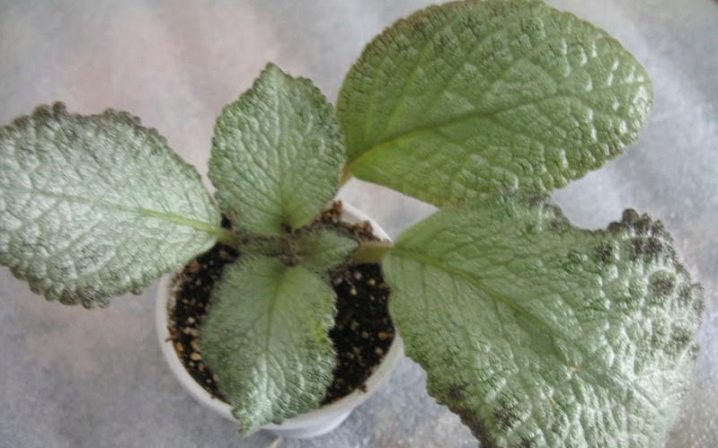
"Sea Foam", or Sea Foam - varietal description, distinguished by its large size and impressive decorative effect.Thanks to the original color of the leaves, the plant looks great both during flowering and during dormancy. Large leaves in the central part are painted in a pale olive color, smoothly turning into a dense ruby at the edges. A special charm to the foliage is given by a pearlescent-glossy glow.
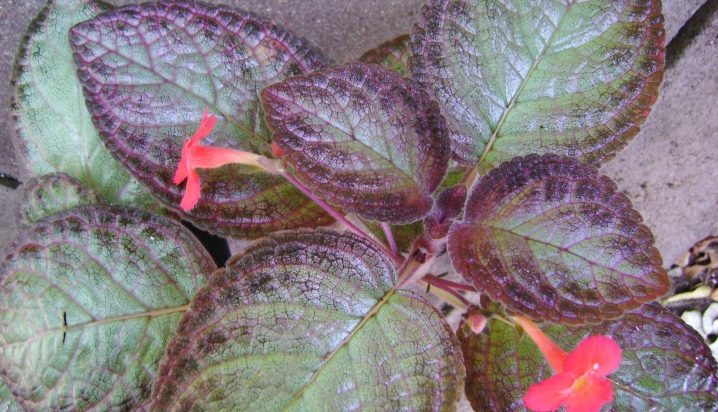
"Emerald Velvet" Is a luxurious variety with dense green pubescent foliage. The leaves are large, fleshy, with an arbitrary dark brown pattern. During the flowering period, forms a few flowers of a delicate lavender color with finely toothed edges. The plant is considered quite whimsical, reacting painfully to non-compliance with the rules of maintenance.

"Strawberry Mist" - a spectacular variety of episodes, which is widespread in indoor floriculture. The plant is remarkable not only for its large ovoid leaves, but also for their amazing colors. The color of the leaves is crimson-red with a pale green pattern and dark ruby edging along the edges. Flowers can be pure bright orange or mixed juicy orange with pale ruby touches.
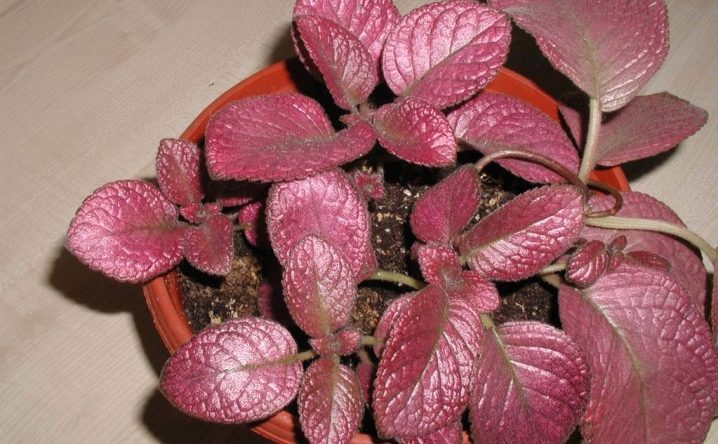
"Pink Panther" - a very decorative variety with large (up to 15 centimeters) leaves. The color of the foliage is uniform green with small bronze stripes or spots. The flowers are small, five-petaled, deep pink in color. The plant is most often grown as a semi-ampelous plant, but due to elongated shoots, it can also take on a cascade form.

"Cheetah" - a relatively new variety of foreign selection, with large quilted leaves of unusual colors. The color of the leaves is herbaceous-olive with dark cherry spots, merging at the edges into a continuous uniform border. During the flowering period, forms medium-sized single flowers of a rich orange-red color with a yellow core.
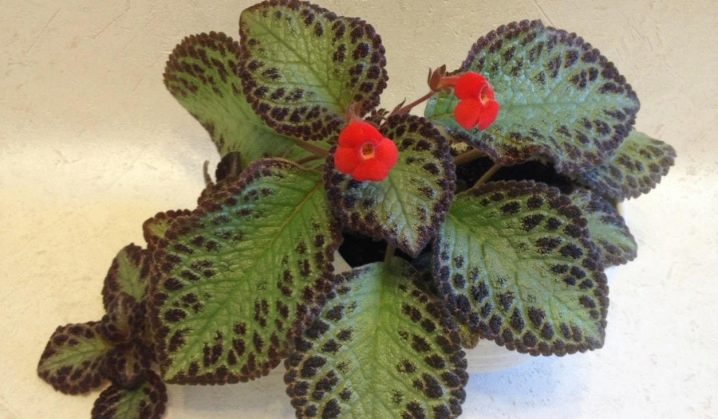
"Jim's Sea of Love" - a spectacular foreign variety that quickly became popular among flower growers. A characteristic feature of this plant is the large elliptical leaves of a pale or dark green color with a scattering of dark wine or charcoal brown spots. With good care, the variety is able to delight its owner with small but very beautiful flowers of an orange-scarlet hue for a long time.
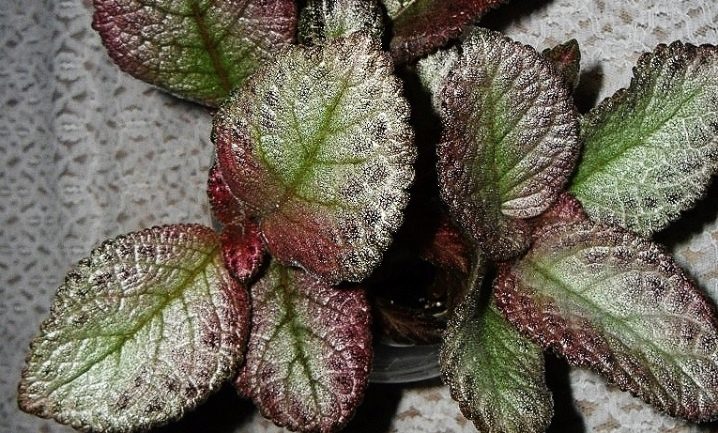
"Butternut" - an interesting variety of Episia, distinguished by its compactness and neat bush formation. The plant is remarkable for smooth ovoid leaves of a juicy green in the center and a light crimson-purple dusting around the edges. An intricate pale green mesh adorns the center of the leaves. The foliage looks especially decorative because of the delicate glossy glow.
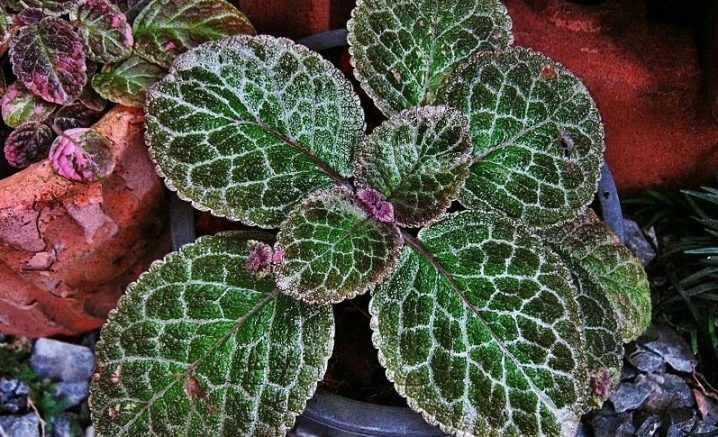
"Blue Nile" - a delightful episode, capable of taking both semi-ampel and cascade, and bush form. This variety is characterized by a two-tone color of the leaves (pale green in the center with a transition to dark emerald at the edges), as well as a rare lilac-lavender color of flowers. The core of the flowers is white with a bright yellow center.
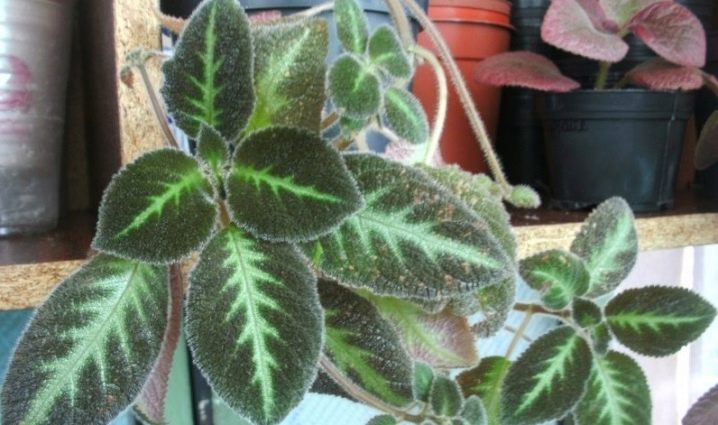
"Sun Gold" - Another popular variety of foreign selection, which has gained wide popularity among flower growers for its unusual color of flowers. The flowers of this variety are characterized by a rich juicy lemon shade with a narrow or wide white edging. Leaves are medium in size, succulent, quilted. The color of the foliage is dominated by a light or dark emerald color with a pale green reticular pattern.
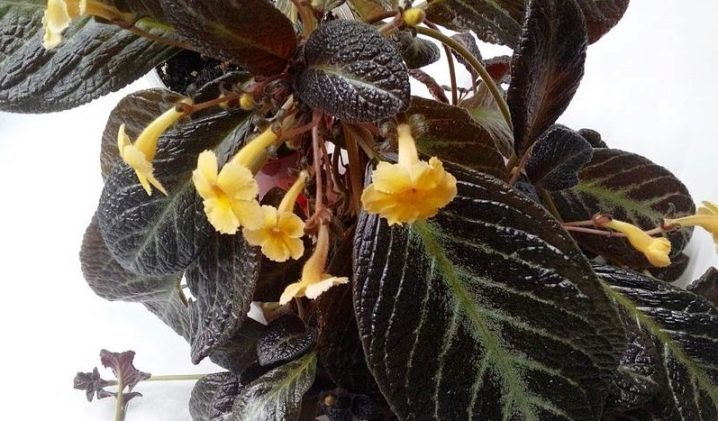
"Pinkiscia" - a very decorative varietal description, forming a large rosette of green-bronze leaves with silver-olive veins. The originality of the bush is emphasized by the pearlescent gloss of the foliage and the elongated side shoots. Flowers - medium-sized, single, juicy pink color with a golden core. In indoor floriculture, it is usually grown as an ampelous plant in hanging containers or pots.
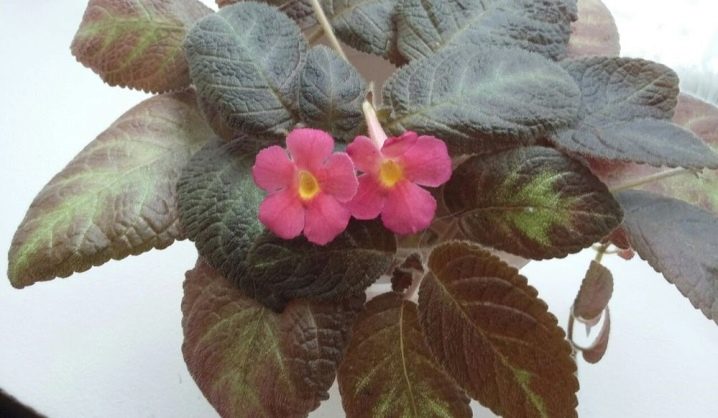
"Chocolate Soldier", or "Chocolate Soldier" - an original compact variety with large fleshy leaves of an unusual color.The foliage is a bronze-chocolate shade with an attractive pearlescent tint and a delicate pale olive pattern. The variety is considered abundant and long-term flowering. During the flowering period, the plant forms numerous small flowers of a delicate scarlet color.

Landing
The ability of this exotic plant to develop and grow rapidly, as well as its tropical origin, determine a number of specific requirements for planting and transplanting an episode. In order for this flowering perennial to fully develop, feel good, bloom in a timely manner and for a long time, the following conditions must be observed in the procedure for planting it:
- selection of a suitable pot in terms of volume;
- high-quality soil mixture;
- competent execution technique.

When choosing a suitable pot, it is better to give preference to not very deep, but wide containers. Considering that the roots of this plant are superficial, the episodes are suitable for a moderately low and spacious pot.

The optimal pot width is considered to be within 20 centimeters. A capacity of this diameter will not take up extra space on the windowsill, but at the same time it will allow the roots of the flower to fully develop. It is important to make sure that there are holes at the bottom of the pot to drain excess water.
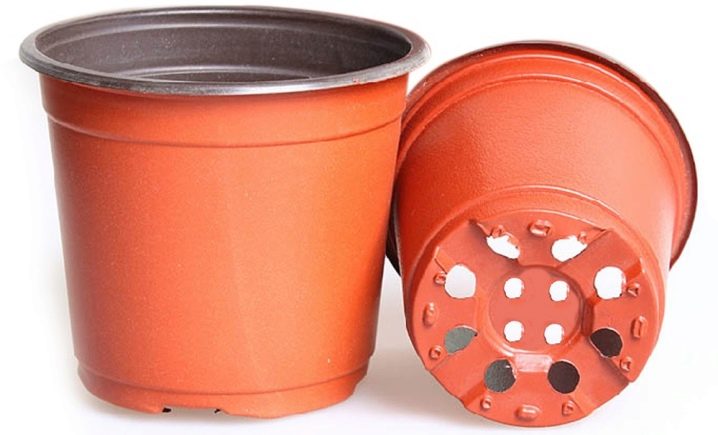
If an episode requires a container of a much larger diameter, it makes sense to think about dividing its bush. This procedure will rejuvenate the plant and, at the same time, replenish the green collection with new specimens.
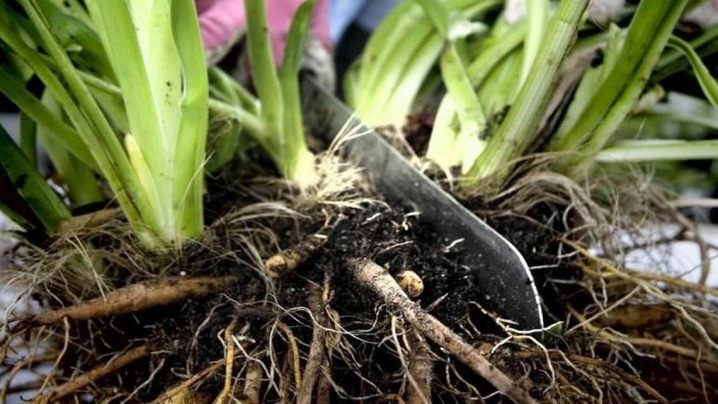
When planting or transplanting an episode, attention should be paid to the quality and properties of the soil mixture. This exotic prefers light, moisture and breathable mixtures with an acidity of 5.5 pH. The episode will feel comfortable enough in a soil mixture consisting of such components as:
- sheet land - 2-4 parts;
- peat - 1 part;
- sand - 1 part.
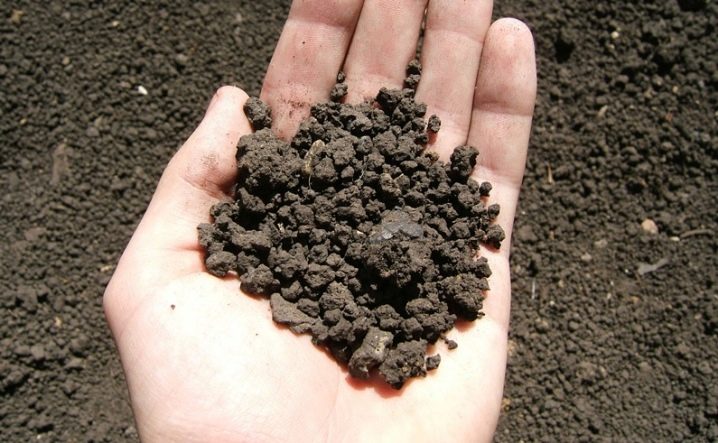
In the absence of leafy earth, this component can be replaced with a mixture for Uzambara violets. To improve the drainage of the soil mixture, it is allowed to add a small amount of charcoal and sphagnum moss to it. Before filling the pot, all ingredients of the soil mixture should be thoroughly mixed.
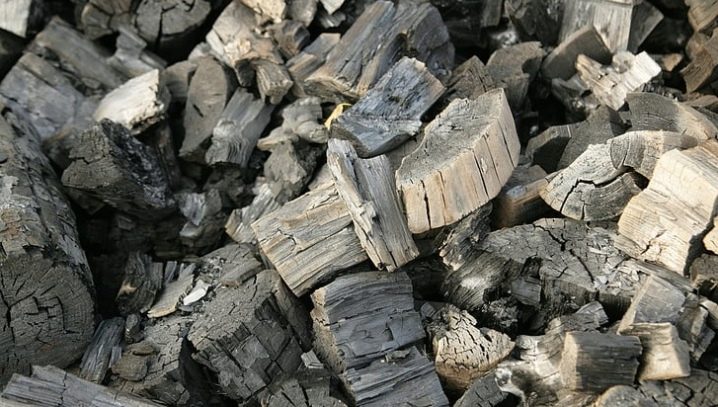
Before planting the plant, a layer of drainage is placed on the bottom of the new pot. It is recommended to use crushed expanded clay, clean pebbles or gravel as drainage. A soil mixture is poured over the drainage layer, after which a flower is carefully placed in a pot together with an earthen lump on the roots.
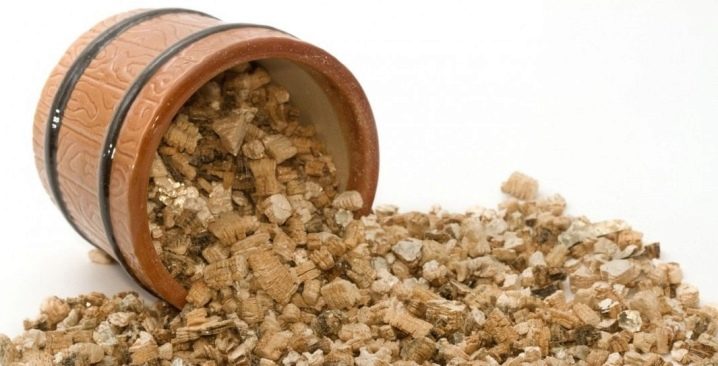
Having placed the plant in a pot, the soil is poured from the sides and compacted a little. The root collar is not buried during planting. After the procedure, the plant needs to be provided with gentle conditions of detention, which will accelerate the process of its recovery.
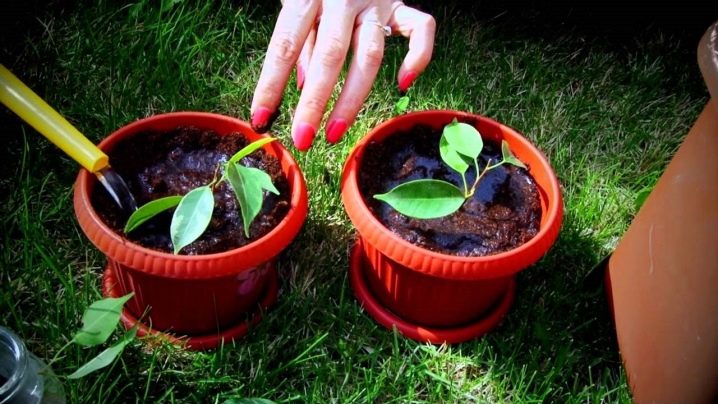
Care rules
Episodes, being representatives of the tropical flora, need specific conditions of detention. Failure to follow the rules of caring for them is one of the main reasons for poor growth, slow development, and lack of flowering of these exotic plants. Gross errors in the content of the episodes can even cause their death.

In order for plants to fully develop and delight the owner with their spectacular appearance, they need:
- optimal lighting;
- good ventilation of air in the room;
- stable temperature regime;
- irrigation regime corresponding to the season;
- suitable air humidity;
- periodic feeding in accordance with the season;
- regular shaping and trimming.
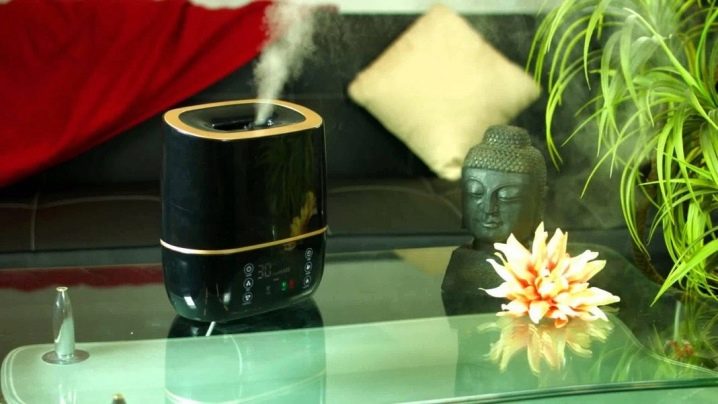
The most comfortable for episodes is considered to be soft and diffused light during the day. Some species and varieties of these plants feel great in light partial shade.
With a lack of light, the stems of these exotic plants begin to stretch strongly, and the foliage begins to thin out. Such metamorphoses indicate a violation of metabolic processes in plant tissues and, as a result, a decrease in their immunity. These factors inevitably lead to a weakening of plant health and their weak resistance to pathogens.

However, an excess of sunlight (in particular, direct) is no less harmful for episodes. Prolonged exposure to direct sunlight during the day is one of the factors leading to a decrease in leaf size, discoloration and wilting. In addition, direct sunlight is the root cause of burns, which have a detrimental effect on the health of exotic plants.

In their natural habitat, the episodes are in constant contact with fresh, clean air. Growing at home, they are quite demanding for good ventilation. For example, smoking is strongly discouraged in rooms where episodes are grown, as these delicate plants react painfully to smoke.
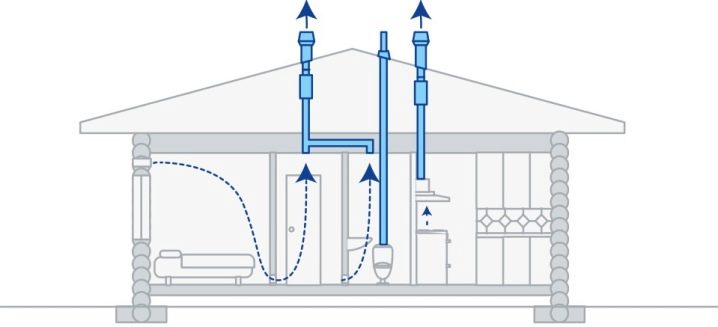
It is also important to take into account that regular ventilation of the room, which is so necessary for the episodes, is fraught with drafts. Considering that drafts are detrimental to these delicate flowers, it is recommended to take the plants to another room while airing the room.

Suitable temperature conditions are essential for these exotic perennials. Experienced florists recommend maintaining the temperature in the room where the episodes grow at 18-25 °. At a lower temperature, plants will stop developing and get sick.
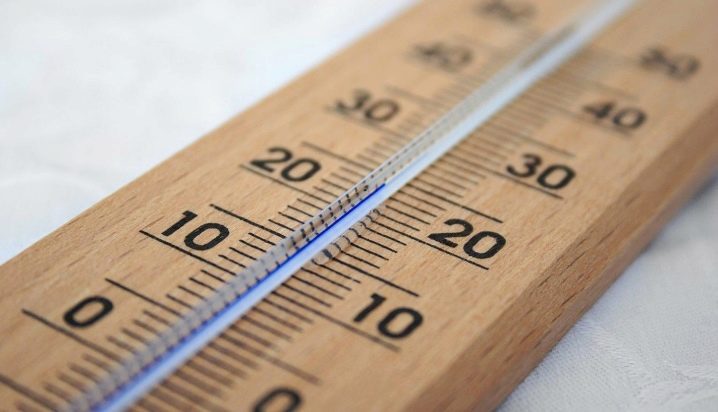
However, too high temperatures are harmful to the episodes. In such conditions, the plants begin to dry and curl foliage, as a result of which the flowers lose their spectacular appearance, look painful and weak.
It is important to protect plants from temperature changes, which are the strongest stress factor. Regularly exposed to temperature jumps, these delicate exotic species lose their initial immunity, stop blooming, develop poorly and get sick.
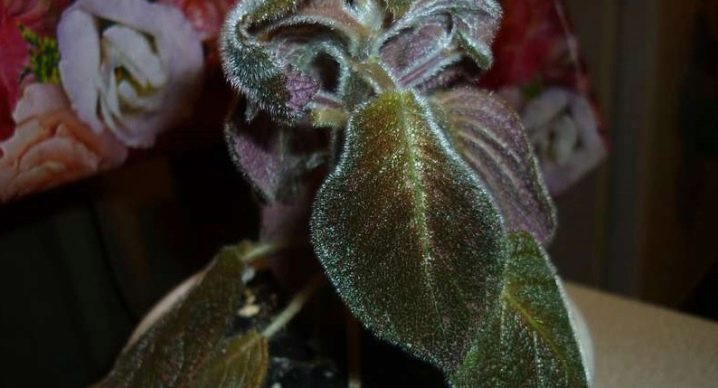
These beautifully flowering perennials need moderate but regular watering. Both drought and dampness are very difficult for the episode. During summer, plants should be watered as the potted soil dries up. In winter, the frequency of watering is reduced, allowing the soil mixture to dry out to a depth of 1-2 centimeters.

Do not allow waterlogging of the soil and stagnation of water in the pot. Excess moisture often causes fungal diseases (rot) of the plant root system.
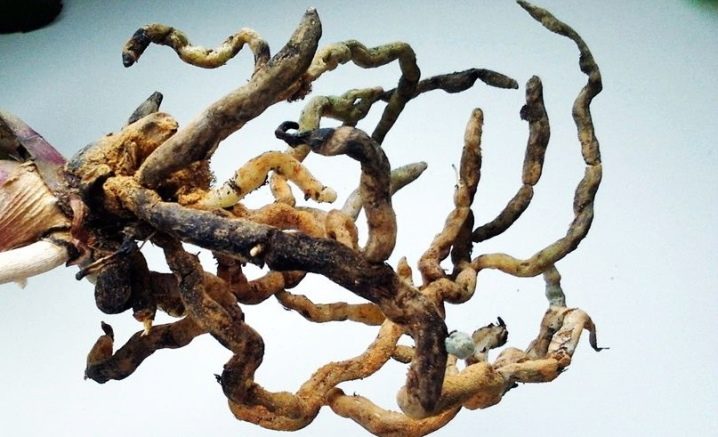
The tropical origin of the episodes determines their increased requirements for air humidity. These exotics painfully tolerate a lack of moisture in the air, which significantly complicates their maintenance during the heating season.
In order for the flowers to feel good, they need to provide an air humidity of 60%. For this, flower growers often use household humidifiers, place wide trays of water near the pots.
It is important to note that, despite the increased demand for air humidity, episodes do not tolerate spraying at all. This procedure cannot be applied to them.
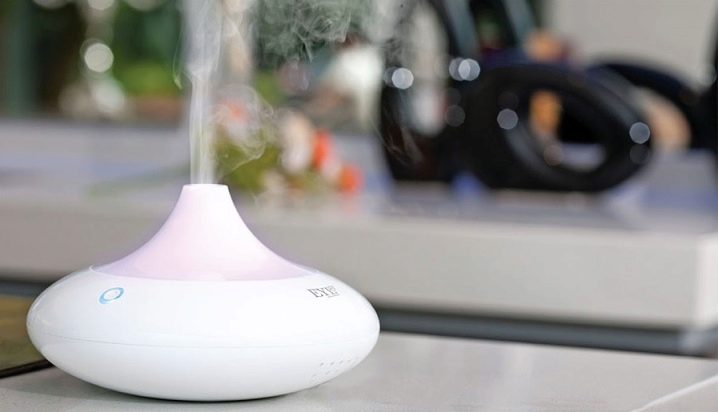
With regard to dressing, these flowering perennials are no different from other indoor flowers. Plant breeders recommend feeding these exotic plants once every 2-3 weeks during the period of intensive growth and flowering (from spring to autumn). For top dressing, conventional fertilizers for flowering ornamental plants, diluted in half the concentration, are suitable. It is undesirable to overfeed green pets with nitrogen-containing fertilizers, as this will contribute to the growth of vegetative mass in the absence of flowering.
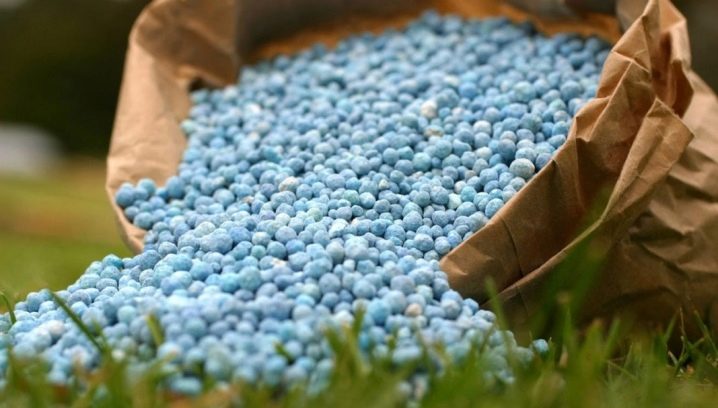
Episodes are characterized by rapid and intense growth, and therefore need to be formed regularly. This procedure consists in the timely pinching of the upper shoots, due to which the plant will gradually form a beautiful and compact bush.
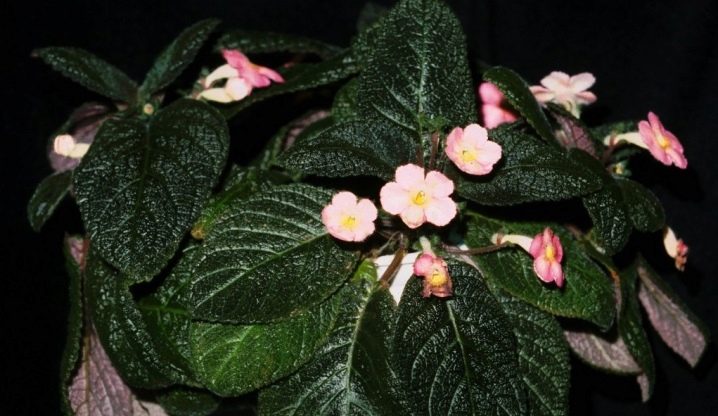
It is also important to ensure that the layers of exotic plants that form rosettes cannot take root in neighboring pots with other plants.In their natural habitat, these tropical perennials are actively developing nearby territories, therefore, growing them at home, it is necessary to control and restrain their growth.
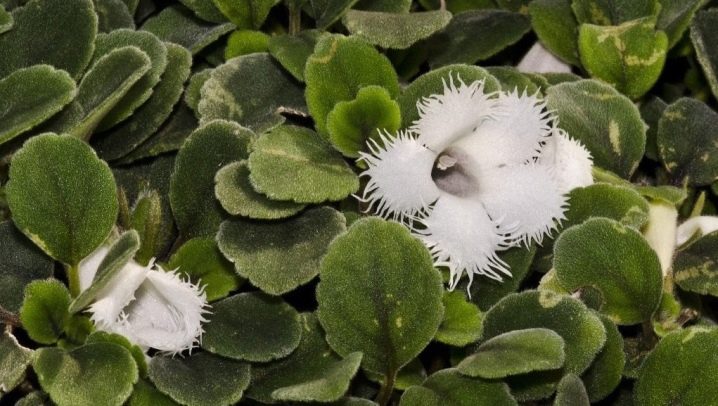
Reproduction methods
The attractive appearance of the episodes is the main reason why growers are willing to breed them. These plants can be propagated in several traditional ways, involving the use of such planting material:
- leaves;
- sockets;
- seeds.

Episode leaves can be rooted both in water and in a loose fertile substrate. Leaves obtained from healthy and well-developed plants are used for the procedure. It is advisable that the exotic does not bloom at this time, since cutting the leaves during this period can cause stress in the plant and, as a result, stop flowering.
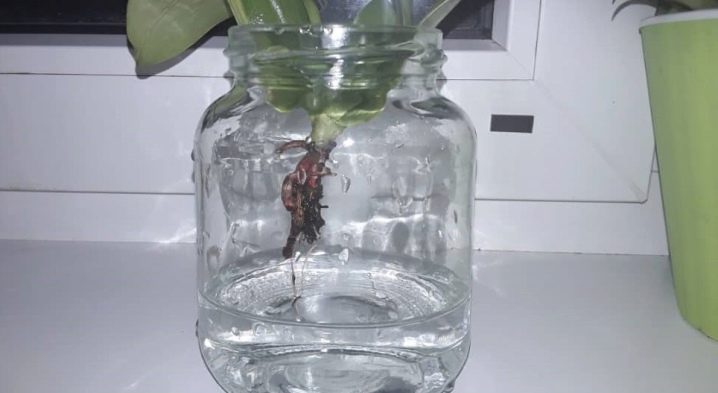
The rosettes easily take root in a nutritious soil mixture with good moisture and air permeability. They are formed on the mother bush from aboveground and root shoots. When a sufficient number of developed young leaves are formed in the outlet, it is separated and transplanted into a separate pot.
Reproduction of the episode by seeds is a method that is considered more laborious by flower growers. It is important to note that when these exotic plants are cultivated with seeds obtained at home, the varietal characteristics of plants are usually not preserved.

For germination, the seeds are laid out on the surface of the substrate, sprinkled with water and covered with a film. The average time for emergence of seedlings is from 2 to 3 weeks. After the emergence of seedlings, the film is removed, and the plants are provided with an optimal temperature and humidity regime and a sufficient amount of light during the day. A pick is made when about 2-4 true leaves are formed in the seedlings.
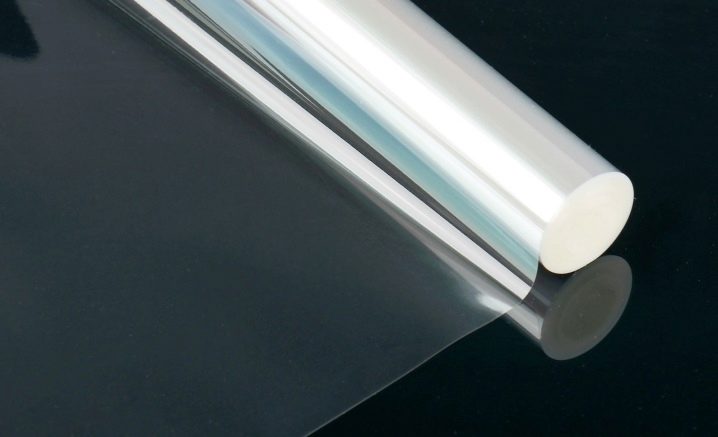
Diseases and pests
According to experienced flower growers, with proper care, episodes are rarely exposed to diseases and pest attacks. Violation of the conditions of detention is one of the main reasons leading to a decrease in plant immunity and, as a consequence, a weakening of their resistance to pathogens and harmful insects. In addition, improper care is also the main reason for the lack of flowering in these exotic species.
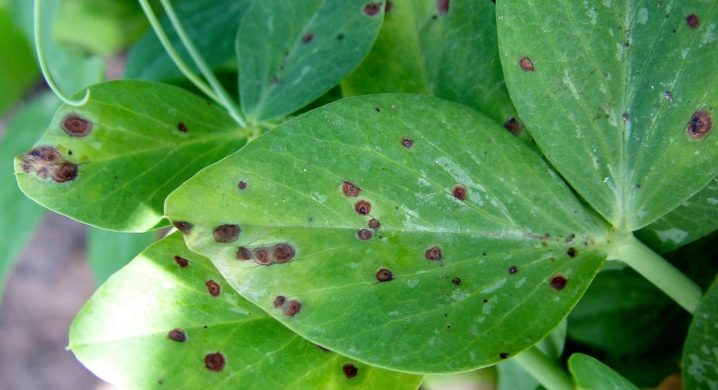
Among the most common pests that cause damage to these exotic plants, flower growers note:
- aphids;
- mealy and root bugs;
- cyclamen tick.

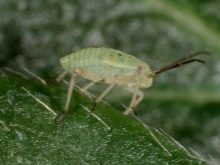
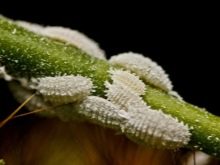
Most plant pests can be detected with the naked eye or with a magnifying glass. The fact that a green pet has suffered from an invasion of parasites is most often indicated by changes in its appearance. So, aphids, feeding on plant juices, makes the leaves curl, dry, lose juiciness and turgor. It is not difficult to identify this parasite when examining the episode, since visually visible aphid colonies prefer to be located on the inside of the leaves. You can get rid of this pest with the help of Fitoverm and Actellik preparations.
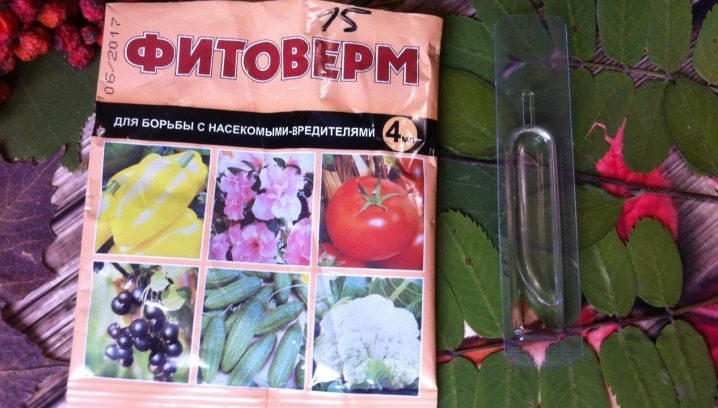
Root bugs and mealybugs are other common episode pests. Both types of parasites cause severe damage to plants. You can identify a mealybug by the traces of its vital activity - white spots, similar to smears of powder or flour. The root worm, in turn, can be easily identified by a detailed study of the substrate, root collar and plant roots. Effective means of fighting these parasites are drugs "Aktara", "Dantop" and "Regent".
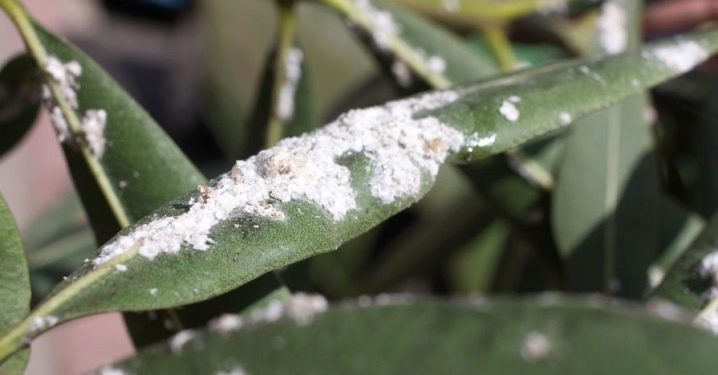
Cyclamen mite is one of the most dangerous pests of indoor flowers, which cannot be detected with the naked eye due to its microscopic size. This pest feeds on plant juices, gradually leading to its death. The fact that the flower has suffered from the colonies of this parasite is evidenced by the drying, paleness and death of the foliage, the inhibition of the development of the plant. Another characteristic feature is the death of the apical growth point.
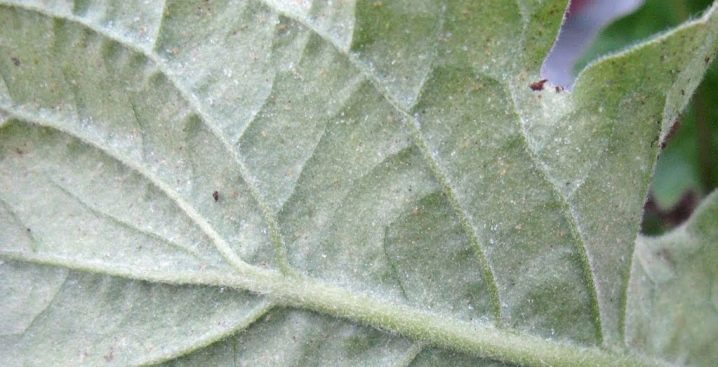
To get rid of the cyclamen tick, a set of measures is used, including plant isolation and treatment with Actellik, removal of affected parts (shoots, leaves, buds), as well as disinfection of window sills and shelves. During treatment, it is also necessary to completely replace the soil and process the pot of the diseased plant.

Often, episodes become a victim of fungal diseases, which develop most often as a result of a violation of the rules of care. Excess moisture in the soil is one of the main causes of rot damage to plants.
If the root system of a plant has suffered from rot, the aerial part of it begins to wither. In this case, flower growers recommend using the plant to obtain cuttings, since it is almost impossible to save an exotic with decaying roots. The contaminated soil must be thrown away, and the pot must be treated with boiling water or any disinfectant.

In order to prevent the occurrence of rot, the irrigation regime should be carefully observed, the moisture level of the soil mixture in the pot should be monitored. It is also desirable that the soil contains a small amount of crushed charcoal or sphagnum. These components will prevent waterlogging of the substrate and, as a result, reduce the risk of root damage by rot pathogens.
An overview of the episode can be seen in the video below.
























The comment was sent successfully.